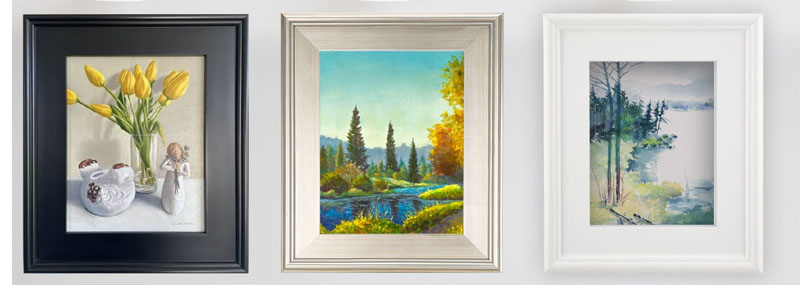How To Price Your Art To Sell

Helpful Hints On How To Price Your Artwork
I’m in the dark as to how to price
On one of our several nationwide art marketing forums recently, the question posed was,
“Theresa, I’m in the dark as to how to price the pet portraits. I don’t know anyone around here who does pet portraits to see what they are charging.
After you figure the cost of the surface (canvas or panel) and the paint (not much) do you charge by the square inch or by the hour? Do you add in a frame?
If it takes me 5 hours to do an 8″X10″ at $10.00/hour plus the panel thats $55.00 or should I charge much more than that? I know that it is an investment for the purchaser but I’m still in the dark as to where to start.”
This was a great question and although I have addressed it before in a Splatter Blog, “Help Me Sell my Art!” the answer is important to all artists.
Most of the replies to this post mentioned coming up with the “formula” method that many artists use or try to use. And although you cannot price your art to sell, neither can you accurately base a price on a formula of just time and materials the way everyone was doing.
My fellow marketing artist and husband, Steve Filarsky had the best logical reply to the question of pricing and “paying yourself by the hour.”
Helpful Hints On How To Price Your Artwork
He replied,
” I don’t advocate pricing by time and materials, price is so much a part of the perceived value of art and that has to be taken into account. But if you decide to go that way you need to take into account all expenses and time.. You need to know how much it costs to pay someone $10 an hour.
FIRST: If you are figuring it takes me so long, at such a price per hour, and materials are this much, you are pricing the cost of manufacturing. So double that for the final price. (This is what you would give to a gallery etc to market, advertise and sell your work.) If you are doing this, you will need to get paid.
SECOND: Your overhead; studio rent, utilities, heat and ac , phone and internet. (Even if your studio is in your house, you will be spending money to light and heat and cool it when working there which you wouldn’t if you were out working somewhere else) and equipment depreciation.
You will have to replace that computer, those brushes, upgrade software, Vehicle, cost of use and insurance etc. Insurance, health insurance. (No one has offered me free insurance yet). PO Box rent. the list goes on. Paper for the printer, postage and envelopes.
THIRD: Time, how much time is spent working but not creating, Bookwork, research, picking up supplies. Delivering work. If you are doing commissions, you can include meeting the client under marketing markup, but time photographing clients, sorting photos, time spent cleaning your studio. Janitors get paid too. Answering phone calls. etc etc.
FOURTH: Downtime: Don’t forget the days that you get sick or can’t work…You need to bring in enough when you are working to cover when you can’t…
So 10 hours at the easel with a twenty five dollar canvas and ten dollars of paint doesn’t add up to the price of creating your piece of artwork.”
Steve’s summarization takes in all the factors of coming up with a “real” price for what you create.
Don’t randomly paste a price on your artwork based on vague factors such as “5 hours of time and $8.00 worth of canvas and paint” or “$3.00 per square inch should do it.” Proudly acknowledge to yourself TWO things when you establish a due diligence price for your artwork.
You and your art are worth every dollar of the price you establish!
You will recognize an actual (not guesswork) profit on the art you sell!
Don’t Forget the Frame!
Often overlooked but…one of the best ways to sell your art is with the help of a great frame. Often times artists forget to frame or showcase there artwork with and or in a frame.
Frames are a great way to help enhance the look, provide a unique look and even add value to your artwork.
Great quality art frames if chosen correctly will not only enhance the look of your art but can potentially increase the value when selling. Choose a complimentary frame or even offer your customers options by presenting your artwork in different colors and or styles of frames.
There are many styles from Museum quality, plein aire, floater frames for canvas and much more that will surely enhance your work and not take away from it.






